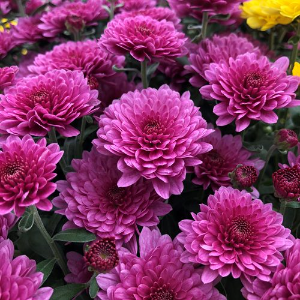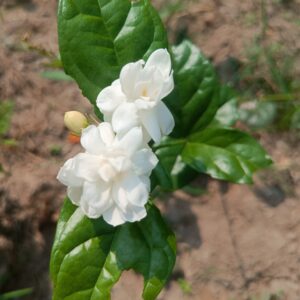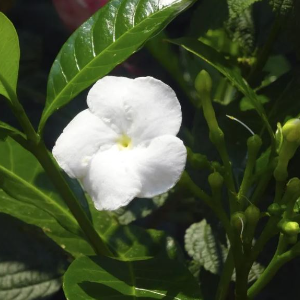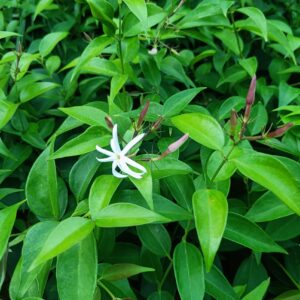Chrysanthemum Purple Sevanthi, also known simply as Sevanthi, is a captivating flower renowned for its vibrant purple hue and exquisite beauty. Belonging to the genus Chrysanthemum, it is a member of the Asteraceae family, which encompasses a wide array of daisy-like plants.
The Purple Sevanthi is native to certain regions of Asia, particularly found in countries like China, Japan, and Korea, where it holds significant cultural and symbolic importance. Its rich purple petals, often with a hint of lavender or magenta, create a striking contrast against its dark green foliage, making it a popular choice for ornamental gardens, floral arrangements, and cultural ceremonies.
This variety of chrysanthemum typically blooms in the late summer or early autumn, adding a burst of color to gardens during a time when many other flowers are fading. Its flowers can vary in size, ranging from small and delicate to large and showy, depending on the specific cultivar.
Beyond its aesthetic appeal, the Purple Sevanthi holds symbolism and meaning in various cultures. In Asian traditions, chrysanthemums are often associated with longevity, happiness, and good fortune. They are frequently used in festivals, weddings, and other celebrations to convey blessings and well-wishes.
Cultivating Purple Sevanthi requires attention to soil quality, sunlight exposure, and watering frequency. These flowers thrive in well-drained soil with ample sunlight, although they can tolerate partial shade in hotter climates. Regular watering is essential, but overwatering should be avoided to prevent root rot.
In addition to its ornamental use, the Purple Sevanthi has also been studied for its potential medicinal properties. Extracts from chrysanthemum flowers have been used in traditional medicine for centuries to treat various ailments, including inflammation, fever, and eye disorders.
Overall, the Chrysanthemum Purple Sevanthi stands out as a symbol of beauty, resilience, and cultural significance, captivating admirers with its enchanting purple blooms and enduring charm. Whether gracing gardens, ceremonies, or medicinal remedies, this exquisite flower continues to leave a lasting impression wherever it blooms.







Reviews
There are no reviews yet.